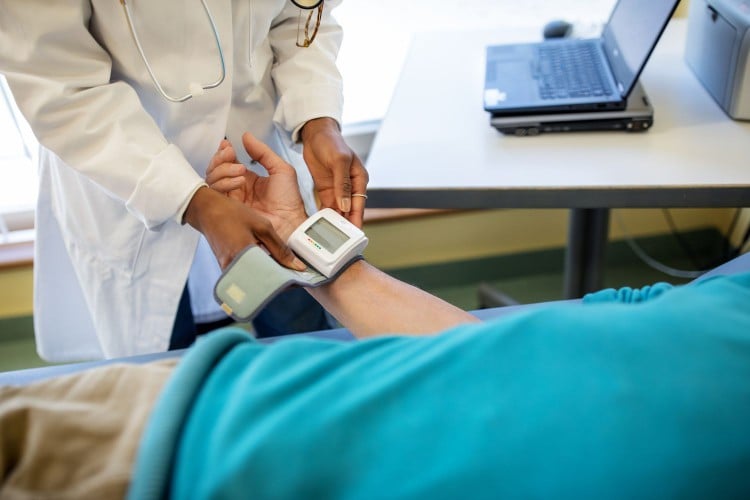
- A new study revealed a potential link between the skin microbiome and signs of skin aging.
- Researchers found the balance of good and bad bacteria can change transepidermal water loss, the moisture that evaporates through the skin.
- To optimize your skin microbiome health, limit the use of harsh ingredients such as salicylic acid.
Numerous factors contribute to skin aging, including environmental, genetics and lifestyle.
Researchers at the Center for Microbiome Innovation (CMI) at the University of California San Diego (UC San Diego) and L’Oréal Research and Innovation discovered the skin microbiome could hold the key to understanding how the skin ages.
Their findings were recently published in Frontiers in Aging.
Skin microbiome diversity shows fewer signs of aging
For the study, the research team analyzed 13 previous L’Oréal studies, which included skin clinical data of more than 1,000 female participants ages 18–70.
Researchers found a link between skin microbiome diversity and , generally viewed as a key sign of skin aging. They also found a negative association between microbiome diversity and transepidermal water loss, which is the moisture that evaporates through the skin.
“The most compelling aspect of the study was that there were indeed taxa that appeared to be linked to the grade of crow’s feet wrinkles, separate from age, despite the strong relationship between wrinkles and age,” Dr. Se Jin Song, the director of research at the UC San Diego Center for Microbiome Innovation, told Medical News Today.
“This is an exciting starting point for further research that can help us definitively determine whether they actually play a role in the development of wrinkles and what that role might be,” she added.
While this study revealed specific microbes of interest, further research will focus on elucidating what role they might play in skin aging.
Dr. Jin Song posed the following questions: “Are they interacting with our skin cells in a particular way? Are they affecting other members of the skin microbiome? Are they producing specific chemicals or compounds that are beneficial for skin appearance?”
“Answering these questions will help pave the path to applications that leverage the relationship between the microbiome and skin health,” she stated.
How does the microbiome affect skin health?
“What researchers are finding is the balance of the good and bad bacteria can change transepidermal water loss,” said Dr. Shilpi Khetarpal, a dermatologist at the Cleveland Clinic, not involved in the current research. “Think of a grape turning into a raisin. With our skin, it works the same way. The microbiome can influence the hydration.”
It can also change how our skin reacts to environmental factors — the sun, pollution, etc. Taking all of this into consideration, it’s evident our skin microbiome can directly influence how we age, Dr. Khetarpal added.
In reference to the study, “this work opens doors to new opportunities for discovering technologies that leverage the microbiome for maintaining healthy-looking skin,” said Dr. Qian Zheng, Head of Advanced Research, North America at L’Oréal.
“The microbial markers and aging signs identified in this study will steer future research, enabling the generation of larger, more harmonized data to accelerate our understanding of the microbiome in the context of healthy skin and skin aging,” Dr. Zheng further noted.
A significant challenge ahead is to validate or refute the causal role of these markers through in vitro methods and in vivo interventional studies, Zheng added. Additionally, identifying specific microbiome markers for each aging sign presents an exciting avenue for personalized skin care solutions.
Gut-skin axis: What’s the connection?
A growing body of research suggests it may be beneficial to focus on skin health and gut health.
“I think what’s interesting is in the last several years, there’s more buzz surrounding the skin microbiome when the gut microbiome was previously focused on,” Dr. Khetarpal said.
“As time goes on, we’re learning the skin microbiome affects acne, rosacea, aging, and other skin conditions. It’s fascinating. We’re seeing this whole new trend in how we care for our skin and new conditions,” Dr. Khetarpal added.
Researchers continue to explore the connection between the gut and skin and whether a healthy gut could lead to healthier, more youthful skin.
“I believe there is an indirect link between the gut microbiome and skin microbiome. For instance, whether you’re taking oral antibiotics or topical antibiotics, it is possible to influence the two microbiomes. As a result, optimizing both the skin microbiome and gut microbiome will provide [the] best results and [improve] the overall appearance of the skin.”
— Dr. Shilpi Khetarpal, dermatologist
How to restore your skin microbiome
While everyone has different skin types, there are some general guidelines for healthier skin.
“Minimize the use of harsh ingredients that will disrupt the microbiome,” Dr. Khetarpal said. “For example, with normal skin use a gentle cleanser and moisturizer. And avoid salicylic acid because it can cause irritation and dryness.”
“The microbiome plays a crucial role in maintaining skin health and function,” Dr. Zheng said.
“Our focus on understanding the microbiome profile of healthy skin and the specific biomarkers associated with various conditions, including aging, is a testament to our commitment to pioneering in this field.”
“This knowledge allows us to identify differentiating and efficacious technologies inspired by the microbiome. We leverage this understanding to develop a variety of actives, including prebiotics and postbiotics, that promote beneficial microbes or target harmful ones. We also explore bio-derived materials like endolysins and even probiotics to reshape the skin microbiome towards a healthier state.”
— Dr. Qian Zheng, head of advanced research, North America at L’Oréal








